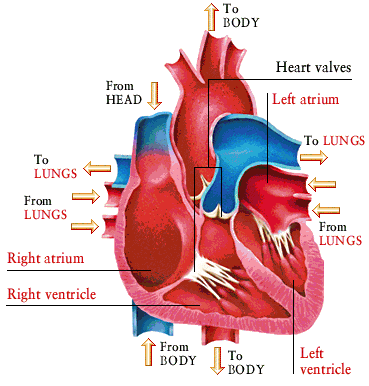The Blood's Path From the Right Atrium to the Aorta
Blood enters the heart through the atria and leaves it through the ventricules. Both atria fill up with blood at the same time. The right atrium receives oxygen-poor blood from the head and body through two large veins called the venae cavae. The left atrium receives oxygen-rich blood from the lungs through four pulmonary veins. These veins are the only veins that carry blood rich in oxygen. After they have filled with blood, the two atria then contract, pushing the blood down into the two ventricules. Then, both the ventricules contract. When the right ventricule contracts, it pushes the oxygen-poor blood from the right ventricule against gravity out of the heart and towards the lungs through the artery veins that carry blood poor in oxygen. At the same time, the left ventricule forcefully pushes oxygen-rich blood from the left ventricule out of the heart out of the body through the aorta to the arteries. The aorta is the largest blood vessel in the body.
